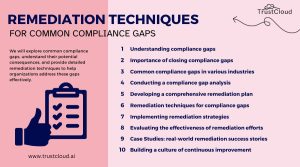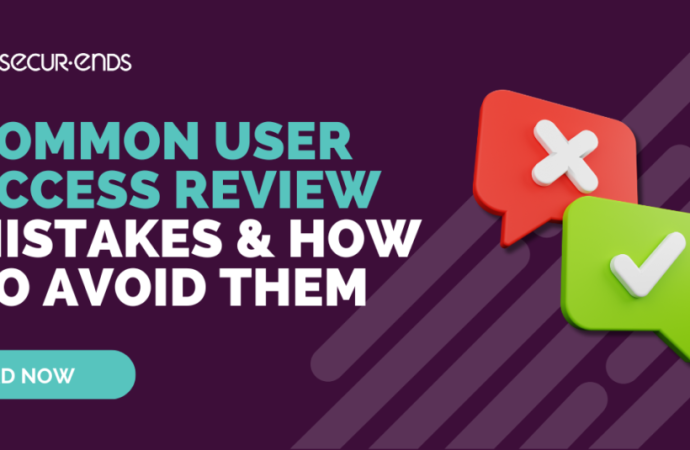Introduction In today’s enterprise environment, managing access to sensitive data and critical systems is a top priority. Organizations rely on structured user access review policies to ensure that only authorized individuals can access key resources. However, many organizations still struggle with gaps in these policies, leading to compliance risks, security vulnerabilities, and operational inefficiencies. In
Introduction
In today’s enterprise environment, managing access to sensitive data and critical systems is a top priority. Organizations rely on structured user access review policies to ensure that only authorized individuals can access key resources. However, many organizations still struggle with gaps in these policies, leading to compliance risks, security vulnerabilities, and operational inefficiencies. In this article, we explore common gaps in user access review policies, the challenges in the user access review process, and how tools like a user access review template can streamline audits, including Sox user access reviews.
What Is a User Access Review?
A user access review is a process where organizations check who has access to what systems, files, and data. It ensures that employees, contractors, and third parties have only the access they need—and nothing more.
For example, someone in the marketing team should not have access to financial records or HR data. These reviews are usually done on a regular schedule, such as every quarter or every six months, depending on the organization’s needs and industry standards.
Understanding User Access Review Policies
A user access review policy is a formal set of guidelines and procedures designed to periodically verify that employees, contractors, and partners have appropriate access to systems and data. These policies help organizations enforce the principle of least privilege, reduce insider threats, and maintain compliance with regulatory frameworks such as SOX, GDPR, and HIPAA.
The user access review process involves evaluating who has access to which systems, confirming that such access aligns with job responsibilities, and promptly revoking unnecessary privileges. Companies often use a user access review template to standardize this process, making audits more efficient and ensuring consistency across departments.
Rise of Common Gaps in Access Review Policies
Access reviews are important for keeping systems and data safe. They help make sure only the right people have access to sensitive information. However, as more companies move to cloud systems and remote work, access review processes have become more complex. Many organizations still use manual or outdated methods, which often lead to mistakes. These small mistakes grow over time and create common gaps. These gaps can cause security risks, such as people keeping access to systems they no longer need. As businesses grow and technology changes, these gaps are becoming more common and harder to ignore.
Why Are User Access Reviews Important?
User access reviews help in:
- Reducing security risks by limiting access to sensitive data
- Ensuring compliance with laws like GDPR, HIPAA, or SOX
- Avoiding insider threats, whether accidental or intentional
- Cleaning up old accounts that are no longer used
- Preparing for audits and proving proper access controls are in place
When done correctly, user access reviews protect data and build trust in systems.
Common Gaps in User Access Review Policies

Image by: Yandex.com
Even with formal policies in place, many organizations encounter recurring gaps that can compromise security and compliance. Some of the most common issues include:
1. Incomplete Coverage of Systems
Many access review policies fail to account for all systems, including legacy applications, cloud platforms, and third-party tools. This creates blind spots where unauthorized access can go unnoticed.
Fix: Conduct a full inventory of all systems and applications, and include each one in the user access review process. Using a comprehensive user access review template ensures no system is overlooked.
2. Inconsistent Review Frequency
Some organizations perform reviews irregularly, such as annually, while others may skip departments or locations due to resource constraints. Inconsistent reviews increase the risk of outdated access permissions remaining active.
Fix: Establish a consistent schedule for access reviews, such as quarterly or biannually, and automate reminders for review tasks. For organizations subject to SOX, ensure Sox user access reviews are performed in alignment with audit requirements.
3. Lack of Clear Roles and Responsibilities
A common gap is unclear ownership of the access review process. When roles are undefined, accountability suffers, leading to missed reviews or incomplete verification.
Fix: Define roles and responsibilities for all stakeholders, including IT, HR, department managers, and compliance teams. Document these responsibilities in your user access review policy.
4. Manual and Error-Prone Processes
Relying on spreadsheets or email-based reviews increases the likelihood of errors, delays, and incomplete tracking. This manual approach also complicates audits and reduces efficiency.
Fix: Implement automation tools that integrate with identity management systems. A digital user access review template can streamline approvals, track changes, and generate audit-ready reports.
5. Failure to Align with Compliance Standards
Many policies are generic and not tailored to regulatory requirements such as SOX. This can result in incomplete documentation and gaps in evidence needed during an audit.
Fix: Ensure your user access review policy explicitly references compliance requirements. Conduct regular Sox user access reviews using structured templates to maintain audit readiness.
6. Insufficient Documentation and Audit Trails
Without proper documentation, organizations cannot demonstrate that access reviews were performed thoroughly and timely. This can be a critical failure point during internal or external audits.
Fix: Use tools or templates that capture reviewer confirmations, approvals, and actions taken. Maintain a clear audit trail for every user access review cycle.
7. Overlooked Role Changes and Terminations
Policies often fail to address access changes due to promotions, transfers, or employee exits. Orphaned accounts and excessive privileges pose a significant security risk.
Fix: Integrate your user access review process with HR systems to automatically trigger reviews or deprovisioning when employee status changes. This ensures access is revoked promptly and reduces insider threat exposure.
How to Strengthen Your User Access Review Policy
Addressing these gaps requires a proactive approach, combining technology, process improvement, and governance best practices. Here are steps organizations can take:
- Develop a Comprehensive Policy: Include all systems, define frequency, and assign responsibilities.
- Use Standardized Templates: A user access review template ensures consistency and simplifies the audit process.
- Automate Workflows: Leverage identity governance solutions to automate reviews, approvals, and reporting.
- Regularly Update Policies: Keep policies aligned with regulatory changes and evolving business needs.
- Train Stakeholders: Educate managers and employees on their roles in access reviews.
- Conduct Continuous Monitoring: Track anomalies, unused accounts, and compliance gaps between review cycles.
- Document Everything: Maintain records to demonstrate compliance during audits, especially for Sox user access review requirements.
Benefits of Closing Policy Gaps
Fixing gaps in access review policies can bring many benefits. First, it improves security by making sure only the right users have the right access. This helps prevent data leaks and cyberattacks. Second, it supports compliance with rules and standards like GDPR, HIPAA, or ISO. Companies can avoid fines and legal issues by having clear and updated access controls. Third, fixing gaps makes the review process faster and easier. Automation tools can save time and reduce errors. Overall, a strong access review system protects both the company and its users.
Organizations that effectively close gaps in their user access review policies enjoy multiple benefits:
- Enhanced Security: Reduced risk of unauthorized access and insider threats.
- Compliance Readiness: Easier adherence to SOX and other regulatory standards.
- Operational Efficiency: Automated reviews save time and reduce human error.
- Improved Governance: Clear roles, responsibilities, and documentation strengthen accountability.
- Audit Readiness: Ready-to-use reports and templates simplify internal and external audits.
Platforms like Securends help organizations automate the user access review process, maintain templates, and perform Sox user access reviews efficiently, ensuring compliance and security across all systems.
Role of Access Review in the Modern World
Today’s world is more connected than ever. Employees, contractors, and partners all need access to company systems. At the same time, cyber threats are growing. Access reviews play a key role in protecting company data. They help IT teams check who has access, why they have it, and whether they still need it. In modern workplaces where people join, leave, or change roles often, regular reviews are necessary. They also help build trust with clients and partners by showing that the company takes data protection seriously.
Challenges in Fixing These Gaps
Fixing access review gaps is not always easy. Many companies still use spreadsheets or manual tracking, which takes time and is prone to human error. Some teams lack the tools or skills to manage access reviews properly. In large companies, the number of users and systems can make the process overwhelming. There’s also a challenge in getting managers to review access regularly—they may be too busy or unsure what to approve. Without clear rules and tools, these gaps continue to grow. Training, automation, and strong policies are needed to solve these issues.
Future of Access Review Policies and Fixes
The future of access review is moving toward smarter and more automated systems. Tools powered by AI and machine learning can help find unusual access patterns and suggest fixes. Companies will focus more on real-time access control instead of just doing reviews once or twice a year. Policies will become clearer and easier to follow, with built-in alerts and reminders. As cybersecurity threats increase, strong access review systems will become a must for every organization. Fixing common gaps today will help companies stay safe, compliant, and ready for the future.
Conclusion
A robust user access review policy is essential for protecting sensitive data, reducing risk, and meeting compliance obligations. Common gaps, such as incomplete coverage, manual processes, and unclear responsibilities, can undermine the effectiveness of access reviews. By adopting standardized user access review templates, aligning processes with SOX requirements, and leveraging automation tools, organizations can close these gaps, strengthen governance, and maintain secure, compliant systems.
Implementing these best practices ensures that your access review cycles are thorough, timely, and auditable—turning a potential vulnerability into a strategic advantage for enterprise security.
















